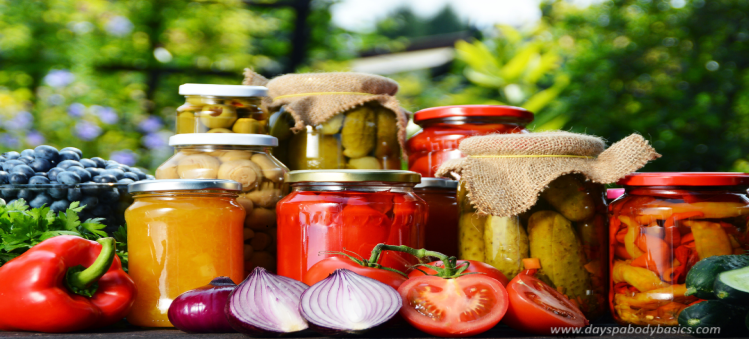
Pet Food Ingredients Market by Source (Animal Derivatives, Plant Derivatives, and Synthetic Derivatives), by Nature (Organic and Inorganic), and by Form (Dry and Wet)– Global Opportunity Analysis and Industry Forecast, 2024– 2030
Pet Food Ingredients Market Overview
The Pet Food Ingredients Market size was valued at USD 42.44 billion in 2023 and is predicted to reach USD 62.51 billion by 2030 with a CAGR of 5.7% from 2024-2030. The pet food ingredients market also known as pet food supplements encompasses the production and supply of various components used in pet food formulations, including proteins, grains, vitamins, minerals, and additives. This market serves to provide essential nutrients and functional benefits to enhance the health, well-being, and longevity of pets. It includes a range of products from basic staples to specialized ingredients designed for premium and customized pet food solutions.
Market Dynamics and Trends
The increasing global demand for collagen-infused pet foods is boosting the growth of the market driven by its benefits in supporting healthy bones, muscles, and promoting skin, fur, and nail growth in pets. This rising consumer preference for collagen-enriched products is prompting manufacturers to ramp up production to meet market needs.
For instance, in April 2023, CULT Food Science Corporation, a manufacturer of cellular agriculture technologies and products, launched three customer brands which are Noochies, Indiana Pet Foods, and Marina Cat. These brands offer unique benefits such as collagen-formulated dog foods that are made of cell-based fish and marine ingredients. This trend highlights the growing importance of high-quality collagen-based ingredients in the pet food industry globally.
Additionally, the rising awareness of organic pet foods among pet owners driven by their multiple health benefits such as improved well-being and longevity for pets is propelling the pet food ingredients market growth. As more pet owners become aware of the importance of organic and natural ingredients in their pets' diets, the demand for organic pet food ingredients continues to increase.
For instance, in July 2023, the Rockster launched the world's first bio-organic dog food in the U.S. to meet the growing demand for organic food among pet owners. The company launched organic pet food to meet the growing demand for organic food among pet owners.
Also, the growing global pet population is further driving the market by increasing the demand for a diverse range of pet food products. As more households adopt pets, there is a growing need for high-quality, nutritious, and diverse pet food options. According to the data provided by the Health for Animals, more than half of the global population is estimated to have a pet at their home. Additionally, families in the U.S., EU and China have over half a billion dogs and cats.
This surge in pet ownership fuels the demand for premium ingredients, including natural, organic, and health-focused components, to cater to the evolving preferences and health concerns of pet owners. However, high cost associated with premium pet foods is limiting their adoption among the middle-class population, thereby restraining pet food ingredients market expansion.
On the contrary, the incorporation of prebiotics and probiotics into pet food to promote a healthy digestive system and overall well-being of the pets is expected to create future opportunities in the market. This burgeoning trend aligns with the evolving preferences of pet owners who seek optimal nutrition for their companions and highlights a significant opportunity for innovation and growth within the pet food ingredients industry.
Market Segmentations and Scope of the Study
The pet food ingredients market report is segmented on the basis of source, nature, form, and region. On the basis of source, the market is divided into animal derivatives, plant derivatives, and synthetic derivatives. On the basis of nature, the market is classified into organic and inorganic. On the basis of form, the market is categorized into dry and wet. The regional breakdown includes regions such as North America, Europe, Asia-Pacific, and the Rest of the World (RoW).
Geographical Analysis
North America dominates the pet food ingredients market share and is expected to continue its dominance during the forecast period. This is attributed to the North America's substantial role as a major supplier of pet products, particularly the U.S. The data of the International Trade Administration (ITA) highlights that the U.S. was the primary supplier of pet products in 2022. This highlights the North America's influence on the growth of the market.
Moreover, another factor contributing to the growth of the pet food ingredients industry in North America is the growing pet population in this region. Research from the Pew Research Center indicates that pets are increasingly becoming a part of every American household. Out of every 100 Americans, around 62 have at least one pet at their home. In addition, even among these 62 Americans, at least 35 Americans have more than one pet. This growing pet population indicates the demand for pet food products to meet the dietary requirements of their pets.
In addition, in the North American region a specific number of pets are diagnosed with weight-related issues, which increases the demand for specialized pet food ingredients. These ingredients are crafted with a meticulous balance of nutrients, lower calorie content, and premium proteins to aid in weight management.
As per the Association for Pet Obesity Prevention, 59% of the total dog population in the U.S. was classified as overweight in 2022. This rising population of pet obesity raises eagerness among the pet owners for the adoption of specialized food ingredients to deal with their obese pets.
On the other hand, in the Asia-Pacific region, the pet food ingredients market is steadily growing, fueled by the increasing disposable income in developing countries including China that empowers pet owners to invest in premium quality pet food supplements. According to the People’s Republic of China, China’s per capita disposable income increased to USD 5,511 in 2023, a growth of 6.3 percent compared to 2022. This rising disposable income of individuals enables greater accessibility to high-quality food ingredients.
Also, the expanding pet population in this region further propels the growth of the pet food ingredients market by creating a surge in demand for diverse and high-quality ingredients in the dietary supplements of pets. For instance, the Government of Canada estimated that the total pet population of India counts to 34,963.6 and is expected to reach 50,122.6 by the year-end 2026. This increasing pet population together with changing lifestyles and urbanization fuels the market.
Moreover, the rising demand for premiumization in pet food further drives the pet food ingredients market as pet owners increasingly seek high-quality, specialized ingredients that offer superior nutritional benefits and cater to specific health needs. This trend towards premium products encourages manufacturers to invest in advanced ingredients and formulations, thus boosting overall market growth.
For example, in July 2022, Nestle India acquired the pet food business of Purina PetCare India to launch premium kid’s nutrition brand, named Gerber. This increasing emphasis on high-quality pet food ingredients in this region drives continuous innovations, shaping the landscape of the pet food industry.
Competitive Landscape
Various key market players operating in the pet food ingredients industry include BASF SE, Darling Ingredients Inc., Cargill Incorporated, Ingredion Incorporated, DSM-Firmenich, Cooke Inc., Archer-Daniels-Midland Company, Kemin Industries, Inc., Novozymes, and Roquette Freres. These market players continue to adopt various market development strategies including expansions to maintain their dominance in the market.
For instance, in August 2023, Cargill, an American global food corporation, expanded its pet food market in Mexico.
The company sifted the formulation of its products and gave a new look to three of its pet food brands that include Pingo, Keycan, and Petmaster. Through this expansion, Cargill aims to enhance its market presence in the pet food ingredients market.
Additionally, in May 2023, DSM-Firmenich, a Dutch multinational corporation, announced to construct a premix plant, supported by the KC Animal Health Corridor for their pet food industry in Tonganoxie. The company expects the plant to be fully operational in the early 2025. This new facility aims to deliver high-quality, traceable, and reliable nutritional ingredients to the pet food ingredients industry.
Key Benefits
-
The report provides quantitative analysis and estimations of the pet food ingredients market from 2024 to 2030, which assists in identifying the prevailing industry opportunities.
-
The study comprises a deep-dive analysis of the current and future pet food ingredients market trends to depict prevalent investment pockets in the industry.
-
Information related to key drivers, restraints, and opportunities and their impact on the pet food ingredients sector is provided in the report.
-
Competitive analysis of the key players, along with their market share is provided in the report.
-
SWOT analysis and Porter's Five Forces model is elaborated on the study.
-
Value chain analysis in the market study provides a clear picture of the roles of stakeholders.
Pet Food Ingredients Market Key Segments
By Source
-
Animal Derivatives
-
Plant Derivatives
-
Synthetic Derivatives
By Nature
-
Organic
-
Inorganic
By Form
-
Dry
-
Wet
By Region
-
North America
-
The U.S.
-
Canada
-
Mexico
-
-
Europe
-
The UK
-
Germany
-
France
-
Italy
-
Spain
-
Denmark
-
Netherlands
-
Finland
-
Sweden
-
Norway
-
Russia
-
Rest of Europe
-
-
Asia-Pacific
-
China
-
Japan
-
India
-
South Korea
-
Australia
-
Indonesia
-
Singapore
-
Taiwan
-
Thailand
-
Rest of Asia-Pacific
-
-
RoW
-
Latin America
-
Middle East
-
Africa
-
REPORT SCOPE AND SEGMENTATION:
|
Parameters |
Details |
|
Market Size in 2023 |
USD 42.44 Billion |
|
Revenue Forecast in 2030 |
USD 62.51 Billion |
|
Growth Rate |
CAGR of 5.7% from 2024 to 2030 |
|
Analysis Period |
2023–2030 |
|
Base Year Considered |
2023 |
|
Forecast Period |
2024–2030 |
|
Market Size Estimation |
Billion (USD) |
|
Growth Factors |
|
|
Countries Covered |
28 |
|
Companies Profiled |
10 |
|
Market Share |
Available for 10 companies |
|
Customization Scope |
Free customization (equivalent up to 80 working hours of analysts) after purchase. Addition or alteration to country, regional, and segment scope. |
|
Pricing and Purchase Options |
Avail customized purchase options to meet your exact research needs. |
Key Players
-
BASF SE
-
Darling Ingredients Inc
-
Cargill Incorporated
-
Ingredion Incorporated
-
DSM-Firmenich
-
Cooke Inc.
-
Archer-Daniels-Midland Company
-
Kemin Industries, Inc
-
Novozymes
-
Roquette Freres




 Speak to Our Analyst
Speak to Our Analyst


































